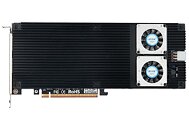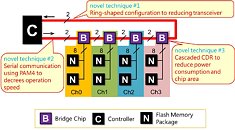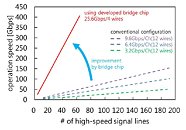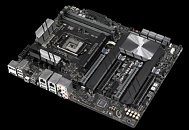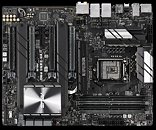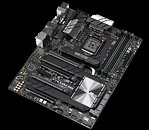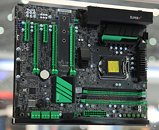Areca Intros M.2 Gen 5 SSD HBA Powering 8 Drives Over x16 with a Bridge Chip
Areca introduced the ARC-1689-8N, a unique M.2 NVMe RAID HBA that lets you pack up to eight M.2-2280 SSDs each with a PCI-Express 5.0 x4 interface, over the card's PCI-Express 5.0 x16 interface. Normally a card like this should only feature four M.2 slots, by segmenting the x16 interface to four x4 interfaces, but this card uses an active bridge chip, the Broadcom PEX89048. This chip is designed by the erstwhile PLX Technologies team. It has a 48-lane PCI-Express Gen 5 switching fabric that takes in 16 Gen 5 lanes, and puts out 32 Gen 5 lanes, making it possible for the ARC-1689-8N to have eight M.2 slots, each with full Gen 5 x4 wiring.
M.2 Gen 5 SSDs run hot, especially the ones with 12-14 GB/s sequential transfer rates and DRAM caches; and so the card uses an active fan-heatsink cooling solution consisting of an extruded aluminium heatsink with thermal pads over each M.2-2280 slot, and a pair of 40 mm fans ventilating the heatsink laterally. The card has a 6-pin PCIe power input, which when combined with the slot power, results in a 150 W power budget. A number of NVMe RAID options can be deployed, including 0, 1, 10, JBOD, or non-RAID; with the company claiming a peak sequential transfer rate for a RAID 0 volume of 60 GB/s. The card is 26.2 cm long, and is strictly 1 slot thick.
M.2 Gen 5 SSDs run hot, especially the ones with 12-14 GB/s sequential transfer rates and DRAM caches; and so the card uses an active fan-heatsink cooling solution consisting of an extruded aluminium heatsink with thermal pads over each M.2-2280 slot, and a pair of 40 mm fans ventilating the heatsink laterally. The card has a 6-pin PCIe power input, which when combined with the slot power, results in a 150 W power budget. A number of NVMe RAID options can be deployed, including 0, 1, 10, JBOD, or non-RAID; with the company claiming a peak sequential transfer rate for a RAID 0 volume of 60 GB/s. The card is 26.2 cm long, and is strictly 1 slot thick.
